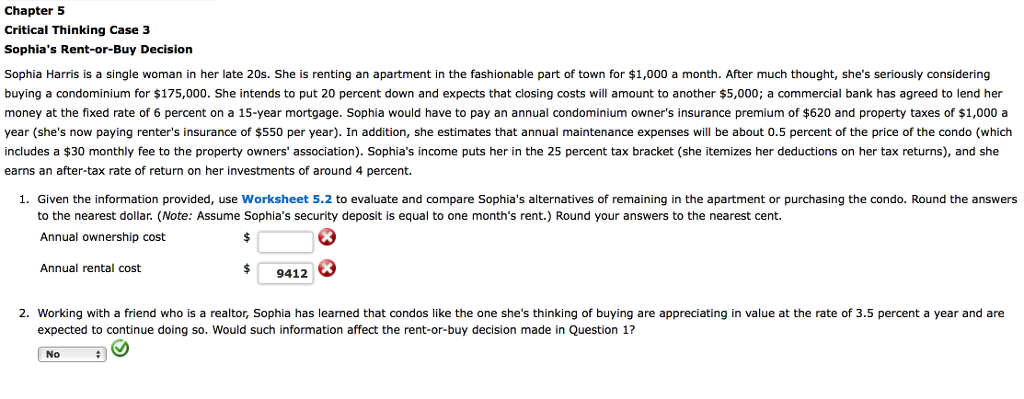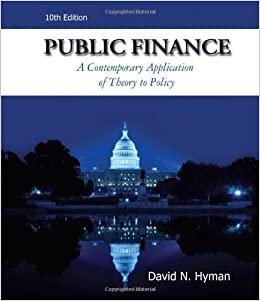Question
RENT-OR-BUY ANALYSIS A. COST OF RENTING 1. Annual rental costs ( 12 monthly rental rate of $ ) $- 2. Renters insurance 3. Opportunity cost

| RENT-OR-BUY ANALYSIS | ||||||||||||||||
| A. | COST OF RENTING | |||||||||||||||
| 1. | Annual rental costs | |||||||||||||||
| ( | 12 | monthly rental rate of | $ | ) | $- | |||||||||||
| 2. | Renters insurance | |||||||||||||||
| 3. | Opportunity cost of security deposit: $ | after-tax savings rate | - | |||||||||||||
| Total cost of renting (line A.1 + line A.2 + line A.3) | $- | |||||||||||||||
| B. | COST OF BUYING | |||||||||||||||
| 1. | Annual mortgage payments (Terms: $ | , | months, | %) | $- | |||||||||||
| ( | 12 | monthly mortgage payment of | $- | ) | ||||||||||||
| 2. | Property taxes | |||||||||||||||
| ( | % of price of home) | |||||||||||||||
| 3. | Homeowners insurance | |||||||||||||||
| ( | % of price of home) | |||||||||||||||
| 4. | Maintenance | |||||||||||||||
| ( | % of price of home) | |||||||||||||||
| 5. | After-tax cost of interest on down payment and closing costs | - | ||||||||||||||
| ( | $ | % after-tax rate of return) | ||||||||||||||
| 6. | Total costs (sum of lines B.1 through B.5) | $- | ||||||||||||||
| Less: | ||||||||||||||||
| 7. | Principal reduction in loan balance (see note below) | $- | ||||||||||||||
| 8. | Tax savings due to interest deductions* | - | ||||||||||||||
| (Interest portion of mortgage payments | $- | tax rate of | %) | |||||||||||||
| 9. | Tax savings due to property tax deductions* | - | ||||||||||||||
| (line B.2 tax rate of | %) | |||||||||||||||
| 10. | Total deductions (sum of lines B.7 through B.9) | - | ||||||||||||||
| 11. | Annual after-tax cost of home ownership | $- | ||||||||||||||
| (line B.6 - line B.10) | ||||||||||||||||
| 12. | Estimated annual appreciation in value of home | |||||||||||||||
| ( | % of price of home) | |||||||||||||||
| Total cost of buying (line B.11 - line B.12) | $- | |||||||||||||||
| Note: Find monthly mortgage payments from Exhibit 5.11. An easy way to approximate the portion of the annual loan payment that goes to interest (line B.8) is to multiply the interest rate by the size of the loan. To find the principal reduction in the loan balance (line B.7), simply subtract the amount that goes to interest from total annual mortgage payments. *Tax-shelter items. | ||||||||||||||||
Sophia Harris is a single woman in her late 20s. She is renting an apartment in the fashionable part of town for $1,000 a month. After much thought, she's seriously considering buying a condominium for $175,000. She intends to put 20 percent down and expects that closing costs will amount to another $5,000; a commercial bank has agreed to lend her money at the fixed rate of 6 percent on a 15-year mortgage. Sophia would have to pay an annual condominium owner's insurance premium of $620 and property taxes of $1,000 a year (she's now paying renter's insurance of $550 per year). In addition, she estimates that annual maintenance expenses will be about 0.5 percent of the price of the condo (which includes a $30 monthly fee to the property owners' association). Sophia's income puts her in the 25 percent tax bracket (she itemizes her deductions on her tax returns), and she earns an after-tax rate of return on her investments of around 4 percent.
Given the information provided, use Worksheet 5.2 to evaluate and compare Sophia's alternatives of remaining in the apartment or purchasing the condo. Round the answers to the nearest dollar. (Note: Assume Sophia's security deposit is equal to one month's rent.) Round your answers to the nearest cent.
Chapter 5 Critical Thinking Case 3 Sophia's Rent-or-Buy Decision Sophia Harris is a single woman in her late 20s. She is renting an apartment in the fashionable part of town for $1,000 a month. After much thought, she's seriously considering buying a condominium for $175,000. She intends to put 20 percent down and expects that closing costs will amount to another $5,000; a commercial bank has agreed to lend her money at the fixed rate of 6 percent on a 15-year mortgage. Sophia would have to pay an annual condominium owner's insurance premium of $620 and property taxes of $1,000a year (she's now paying renter's insurance of $550 per year). In addition, she estimates that annual maintenance expenses will be about 0.5 percent of the price of the condo (which includes a $30 monthly fee to the property owners' association). Sophia's income puts her in the 25 percent tax bracket (she itemizes her deductions on her tax returns), and she earns an after-tax rate of return on her investments of around 4 percent. 1. Given the information provided, use Worksheet 5.2 to evaluate and compare Sophia's alternatives of remaining in the apartment or purchasing the condo. Round the answers to the nearest dollar. (Note: Assume Sophia's security deposit is equal to one month's rent.) Round your answers to the nearest cent. Annual ownership cost 9412 Annual rental cost 2. Working with a friend who is a realtor, Sophia has learned that condos like the one she's thinking of buying are appreciating in value at the rate of 3.5 percent a year and are expected to continue doing so. Would such information affect the rent-or-buy decision made in Question 1? NoStep by Step Solution
There are 3 Steps involved in it
Step: 1

Get Instant Access to Expert-Tailored Solutions
See step-by-step solutions with expert insights and AI powered tools for academic success
Step: 2

Step: 3

Ace Your Homework with AI
Get the answers you need in no time with our AI-driven, step-by-step assistance
Get Started


